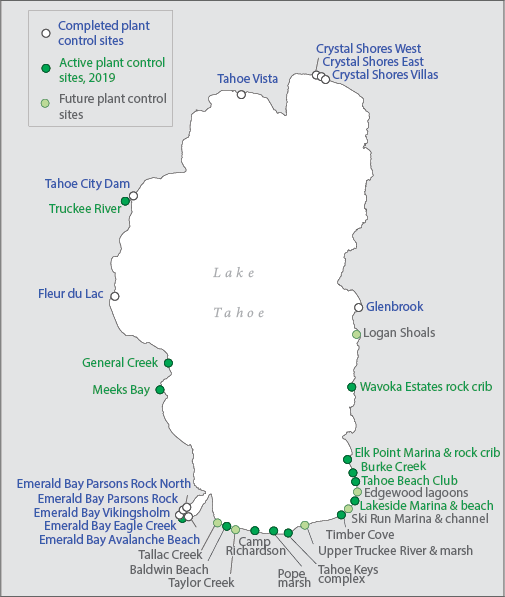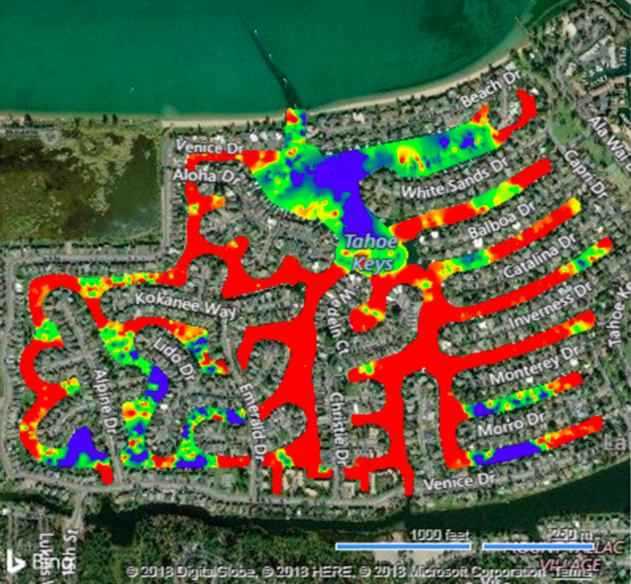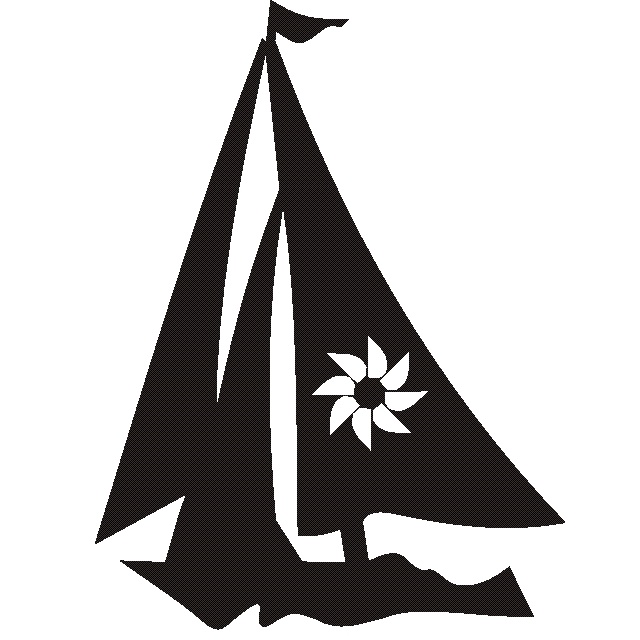Aquatic Invasive Species
Aquatic weeds have spread to many areas around Lake Tahoe, creating the urgency that lake-wide collaboration is needed to control aquatic invasive species (AIS).

The Problem
Aquatic invasive and nuisance plant species cover over 90 percent of the Tahoe Keys lagoons and there is growing concern regarding their spread into Lake Tahoe itself.
Taking Action
Despite the considerable management and financial investment by TKPOA to control this problem, weeds continue to spread and management costs continue to mount.
Aquatic weeds have spread to many areas around Lake Tahoe, creating the urgency that lake-wide collaboration is needed to control aquatic invasive species (AIS). The 2015 Lake Tahoe Aquatic Invasive Species Implementation Plan lists the Tahoe Keys lagoons as the highest priority areas for control of AIS in Lake Tahoe, as the largest and most persistent population of aquatic weeds grow in this location, sprawling over 172 acres of waterways. All other lake-wide infestations combined account for approximately 20 acres.
Check out the Water Quality Department’s Dedicated Website
Environmental Impact Studies
TKPOA submitted the Tahoe Keys Lagoons Aquatic Weed Control Methods Test Application, triggering the need for an Environmental Impact Report (EIR) required by the California Environmental Quality Act (CEQA) and Lahontan Regional Water Quality Control Board (Lahontan Water Board), and an Environmental Impact Statement (EIS) required by the Tahoe Regional Planning Agency (TRPA).

Control Methods Test application
The Control Methods Test application proposes the use of targeted herbicides as one weed control method to test alongside and in combination with other methods to reduce and control the abundant growth of invasive and nuisance aquatic weeds that are compromising water quality and degrading beneficial uses of the Tahoe Keys lagoons, as well as threatening the future ecosystem and water quality of Lake Tahoe.
A Collaborative multi-stakeholder process
The goal of the collaborative, multi-stakeholder process is to ensure stakeholder concerns and perspectives are addressed during the environmental analysis, resulting in a plan for testing weed control methods that is science-based, broadly supported, and effective at controlling aquatic weeds in the Tahoe Keys lagoons.
Environmental analysis
The environmental analysis will determine if the use of U.S. Environmental Protection Agency (EPA) and the Department of Pesticide Regulation (DPR) approved herbicides can meet the strict environmental standards of Lake Tahoe’s classification as a Tier Three, Outstanding National Resource Water.
TRPA
TRPA, one of the lead agencies on this project, convened a core committee of stakeholders to select neutral facilitation services and an independent environmental consulting firm for the environmental analysis process. The selection team is composed of representatives from Lahontan Water Board, TKPOA, TRPA, Tahoe Water Suppliers Association, and The League to Save Lake Tahoe.
Solutions to control the weeds.
To learn more about the efforts to control the invasive weeds in the Tahoe Keys check out our multi-partner collaboration.

